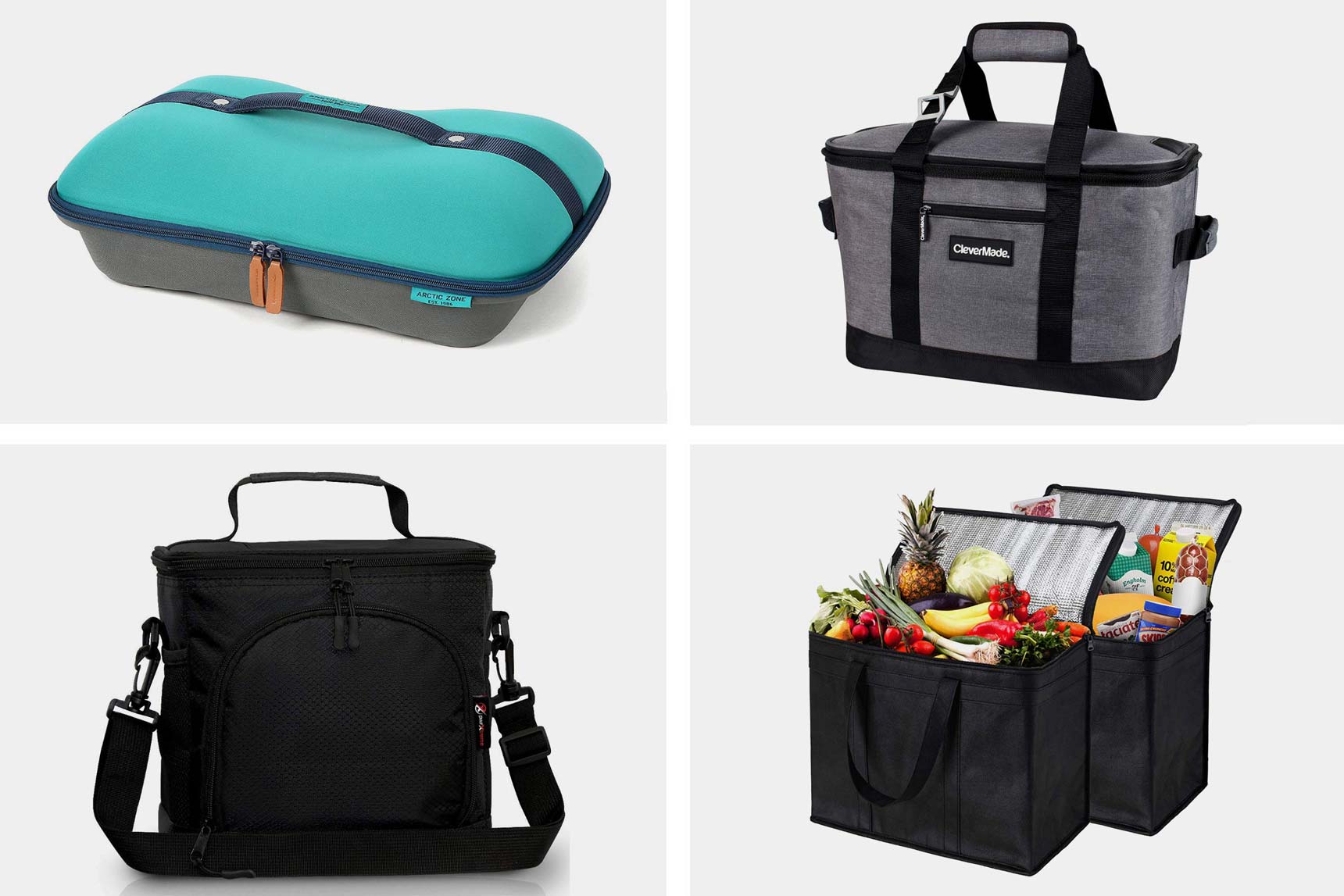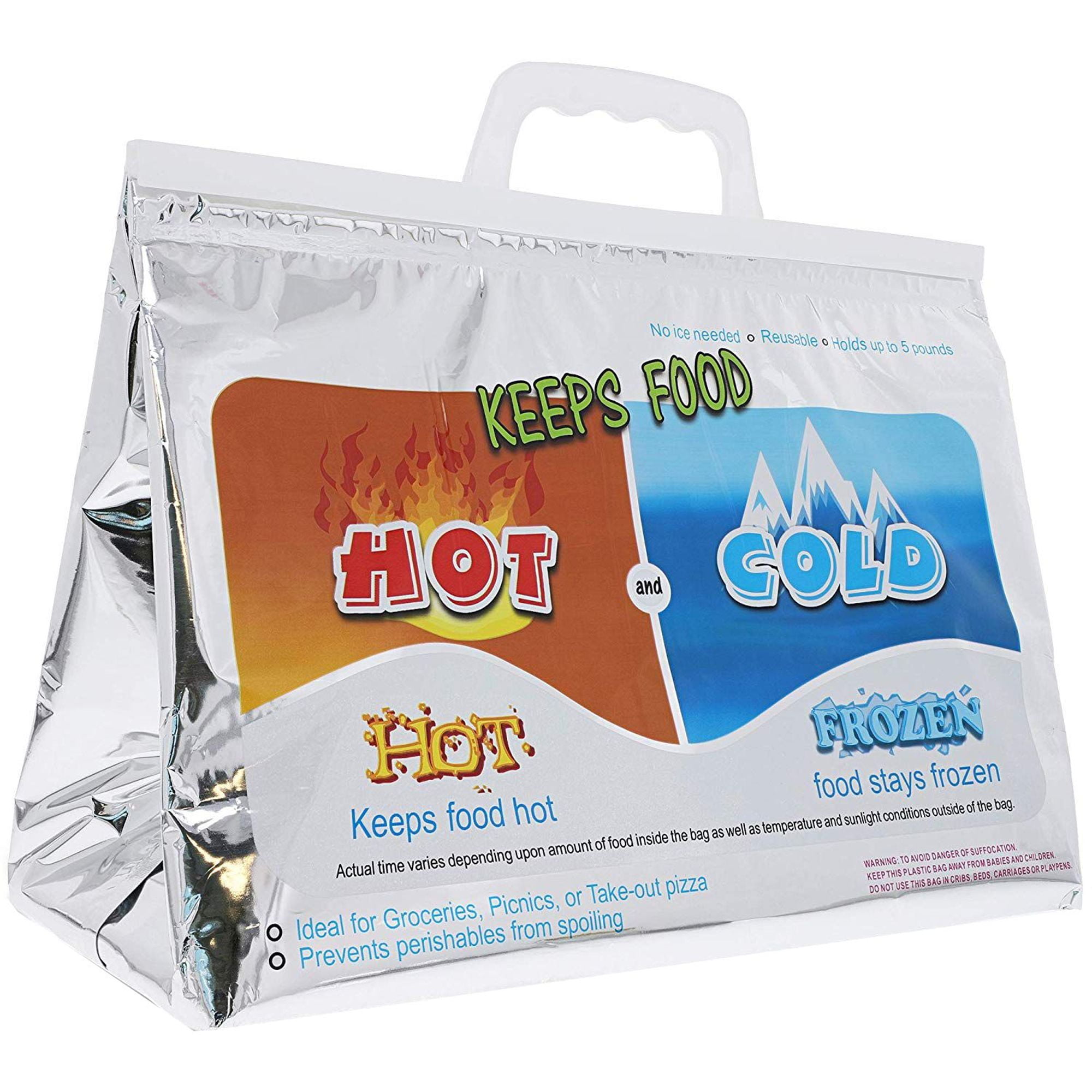Thermal food bags are an essential tool for anyone who wants to keep their food fresh and at the perfect temperature, whether they’re picnicking in the park or delivering food for a catering company. In this comprehensive guide, we’ll explore the different types of thermal food bags available, the materials and insulation they’re made of, and the features and accessories that can make them even more useful.
We’ll also discuss how to choose the right size and capacity for your needs, and how to properly care for and maintain your thermal food bag so it lasts for years to come.
Types of Thermal Food Bags
Thermal food bags come in a variety of types, each designed for specific needs and preferences. Understanding the different types available can help you choose the best option for your particular requirements.
The three main types of thermal food bags are insulated, heated, and cooled bags. Each type offers unique features and benefits:
Insulated Bags
- Description:Insulated bags are designed to maintain the temperature of food by providing a layer of insulation between the food and the outside environment.
- Features:Typically made from durable materials with thick insulation, these bags can keep food hot or cold for several hours.
- Examples:Lunch bags, picnic bags, and grocery bags with insulated compartments.
Heated Bags
- Description:Heated bags are designed to heat food and keep it warm for extended periods.
- Features:They incorporate heating elements that generate heat, allowing you to warm food on the go.
- Examples:Electric lunch boxes, heated travel bags, and portable food warmers.
Cooled Bags
- Description:Cooled bags are designed to keep food cold and fresh, particularly for perishable items.
- Features:They utilize cooling elements, such as ice packs or gel packs, to maintain a low temperature inside the bag.
- Examples:Cooler bags, insulated picnic baskets, and portable refrigerators.
Materials and Insulation
Thermal food bags rely on insulation to maintain the temperature of the food inside. The materials used in the construction of these bags and the thickness of the insulation play a crucial role in determining their effectiveness.
The most common materials used in thermal food bags include:
- Nylon:Durable and water-resistant, making it suitable for outdoor use.
- Polyester:Lightweight and easy to clean, but less durable than nylon.
- Neoprene:Stretchable and flexible, providing good insulation.
- Canvas:Durable and breathable, but not waterproof.
The insulation used in thermal food bags can vary in thickness and type. Thicker insulation provides better insulation, but it also makes the bag bulkier and heavier. Common types of insulation include:
- Foam:Inexpensive and lightweight, but not as effective as other materials.
- Reflective material:Reflects heat back into the bag, improving insulation.
- Down:Natural material that provides excellent insulation, but can be expensive and difficult to maintain.
Features and Accessories: Thermal Food Bags

Thermal food bags come equipped with an array of features and accessories that enhance their functionality and convenience. These features play a crucial role in preserving the temperature of your food and beverages, making them ideal for picnics, road trips, and other outdoor activities.
Some of the most common features include adjustable straps, leak-proof liners, and external pockets. Let’s explore how these features contribute to the overall utility of thermal food bags.
Adjustable Straps
- Adjustable straps allow you to customize the fit of the bag, ensuring a comfortable carrying experience.
- They enable you to carry the bag on your shoulder or as a backpack, providing versatility and ease of use.
Leak-Proof Liners
- Leak-proof liners prevent spills and leaks, keeping your food and beverages contained.
- They are easy to clean and maintain, ensuring hygienic storage of your belongings.
External Pockets
- External pockets provide additional storage space for items such as utensils, napkins, or keys.
- They allow you to keep these essentials within easy reach without having to dig through the main compartment.
Capacity and Size
Thermal food bags come in a wide range of capacities and sizes to accommodate different needs and usage scenarios. The capacity is typically measured in liters or cubic inches, indicating the volume of food and beverages that can be stored inside.When
choosing the appropriate size, consider the intended use and the amount of food you plan to store. For short trips or light snacks, a smaller bag with a capacity of 5-10 liters may suffice. For longer outings or larger groups, opt for a bag with a capacity of 15-25 liters or more.
Some bags feature adjustable compartments or expandable designs to accommodate varying amounts of food.
Capacity Range
Thermal food bags typically range in capacity from 5 liters to over 25 liters:
-
-*Small (5-10 liters)
Suitable for short trips, picnics, or storing small snacks and drinks.
-*Medium (10-15 liters)
Ideal for day trips, packed lunches, or storing multiple food items and beverages.
-*Large (15-25 liters)
Perfect for extended outings, group picnics, or transporting large amounts of food and drinks.
-*Extra Large (over 25 liters)
Designed for catering, commercial use, or storing bulky items.
Size Considerations
When selecting the size of a thermal food bag, consider the following factors:
-
-*Amount of food
Estimate the volume of food and beverages you typically need to store.
-*Duration of use
For longer outings, choose a bag with a larger capacity to accommodate additional food and drinks.
-*Space availability
Ensure the bag fits comfortably in your vehicle or carrying space.
-*Weight
Consider the weight of the bag when filled, especially for extended periods of carrying.
Care and Maintenance
To ensure the longevity and effectiveness of your thermal food bag, proper care and maintenance are essential. Regular cleaning and storage practices will preserve the insulation and keep your bag in optimal condition.
Follow these guidelines to maintain your thermal food bag:
Cleaning
- Hand-wash the bag gently with a mild detergent and warm water. Avoid using harsh chemicals or abrasive sponges.
- Rinse the bag thoroughly with clean water to remove any detergent residue.
- Air-dry the bag completely before storing it to prevent mold or mildew growth.
Storage
- Store the bag in a cool, dry place when not in use.
- Avoid exposing the bag to direct sunlight or extreme temperatures, as this can damage the insulation.
- If the bag is not used for an extended period, consider storing it with a desiccant packet to absorb moisture.
Applications and Use Cases
Thermal food bags offer a versatile solution for preserving the temperature of food and beverages in various scenarios.
Picnics
- Thermal food bags keep food and drinks cold or warm during outdoor picnics, ensuring freshness and preventing spoilage.
- They provide ample space to store sandwiches, salads, snacks, and beverages, making them ideal for family outings.
- The insulated lining effectively maintains food temperatures for extended periods, allowing for a leisurely picnic experience.
Road Trips, Thermal food bags
- Thermal food bags are essential for road trips, providing a convenient way to transport and store food while traveling.
- They keep snacks and meals fresh, reducing the need for frequent stops at restaurants or fast-food chains.
- The portable nature of thermal food bags makes them easy to carry in the car and access during rest stops or scenic breaks.
Food Delivery
- Thermal food bags are widely used by food delivery services to maintain the temperature of prepared meals during transportation.
- The insulated lining ensures that food arrives hot or cold, enhancing the customer experience and preserving the quality of the food.
- Thermal food bags also help prevent spills and messes during delivery, ensuring food arrives in a presentable condition.
Design and Aesthetics

Thermal food bags come in a wide range of designs and styles, from classic and functional to modern and trendy. The design elements of a thermal food bag can influence its functionality and appeal, making it an essential consideration when choosing the right bag.
Shape and Structure
Thermal food bags are available in various shapes and structures to accommodate different needs. Rectangular bags are ideal for packing large quantities of food, while round bags are more compact and easier to carry. Some bags feature a collapsible design for easy storage when not in use.
Materials and Colors
The materials used in the construction of thermal food bags play a significant role in their design and functionality. Durable and water-resistant materials, such as nylon and polyester, are commonly used to ensure longevity and protection from the elements. Thermal food bags are available in a wide range of colors, from neutral tones to vibrant hues, allowing users to choose a bag that matches their personal style.
Insulation
The insulation used in thermal food bags is crucial for maintaining the temperature of food. Advanced insulation materials, such as high-density foam and reflective linings, help to keep food hot or cold for extended periods. Some bags feature multiple layers of insulation for enhanced thermal performance.
Handles and Straps
The handles and straps of thermal food bags are designed for comfort and ease of use. Padded handles and adjustable shoulder straps provide ergonomic support, making it easy to carry the bag even when it is fully loaded. Some bags feature additional straps or buckles for securing the bag to a stroller or backpack.
Additional Features
Thermal food bags often come with additional features to enhance their functionality and convenience. These features may include exterior pockets for storing utensils, napkins, or other small items; a removable inner liner for easy cleaning; and a built-in ice pack compartment for extended cooling.
Market Trends and Innovations

The thermal food bag industry is constantly evolving, with new technologies and features emerging to enhance the performance and convenience of these bags.
One key trend is the increasing use of sustainable materials. Consumers are becoming more environmentally conscious, and they are looking for products that are made from recycled or biodegradable materials. Thermal food bags made from sustainable materials are a great way to reduce your environmental impact.
Advanced Insulation Technologies
Another trend is the development of new insulation technologies. These technologies are designed to keep food hot or cold for longer periods of time. Some of the most advanced insulation technologies include vacuum insulation panels (VIPs) and aerogel insulation.
Smart Features
Thermal food bags are also becoming smarter. Some bags now come with built-in temperature sensors that allow you to monitor the temperature of your food. Other bags have built-in charging ports so you can keep your devices charged while you’re on the go.
Personalized Designs
Finally, thermal food bags are becoming more personalized. Consumers are now able to choose from a wide range of colors, patterns, and styles to find a bag that matches their personality.
Common Queries
What are the different types of thermal food bags?
There are three main types of thermal food bags: insulated, heated, and cooled. Insulated bags are the most common type, and they work by trapping air between the layers of insulation to create a barrier that prevents heat from escaping.
Heated bags have a built-in heating element that can be used to warm food, and cooled bags have a built-in cooling element that can be used to keep food cold.
What materials are thermal food bags made of?
Thermal food bags are typically made of a durable material such as nylon or polyester, and they have a layer of insulation between the outer and inner layers. The type of insulation used will vary depending on the type of bag, but common materials include foam, batting, and reflective foil.
What features should I look for in a thermal food bag?
When choosing a thermal food bag, there are a few features you should keep in mind. These include the size and capacity of the bag, the type of insulation it has, and the features it offers. Some common features include adjustable straps, leak-proof liners, and external pockets.
